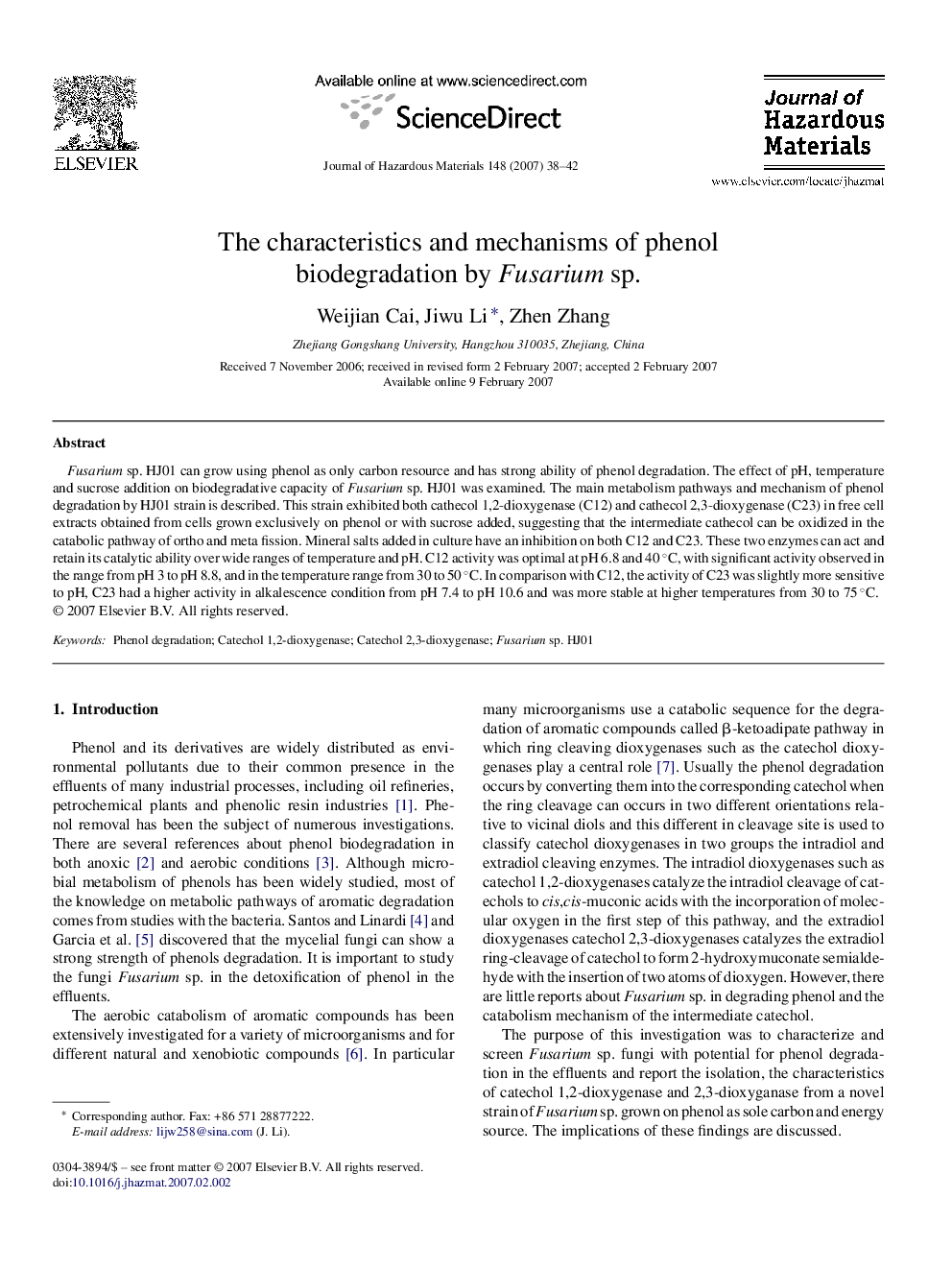| Article ID | Journal | Published Year | Pages | File Type |
|---|---|---|---|---|
| 584373 | Journal of Hazardous Materials | 2007 | 5 Pages |
Abstract
Fusarium sp. HJ01 can grow using phenol as only carbon resource and has strong ability of phenol degradation. The effect of pH, temperature and sucrose addition on biodegradative capacity of Fusarium sp. HJ01 was examined. The main metabolism pathways and mechanism of phenol degradation by HJ01 strain is described. This strain exhibited both cathecol 1,2-dioxygenase (C12) and cathecol 2,3-dioxygenase (C23) in free cell extracts obtained from cells grown exclusively on phenol or with sucrose added, suggesting that the intermediate cathecol can be oxidized in the catabolic pathway of ortho and meta fission. Mineral salts added in culture have an inhibition on both C12 and C23. These two enzymes can act and retain its catalytic ability over wide ranges of temperature and pH. C12 activity was optimal at pH 6.8 and 40 °C, with significant activity observed in the range from pH 3 to pH 8.8, and in the temperature range from 30 to 50 °C. In comparison with C12, the activity of C23 was slightly more sensitive to pH, C23 had a higher activity in alkalescence condition from pH 7.4 to pH 10.6 and was more stable at higher temperatures from 30 to 75 °C.
Related Topics
Physical Sciences and Engineering
Chemical Engineering
Chemical Health and Safety
Authors
Weijian Cai, Jiwu Li, Zhen Zhang,
